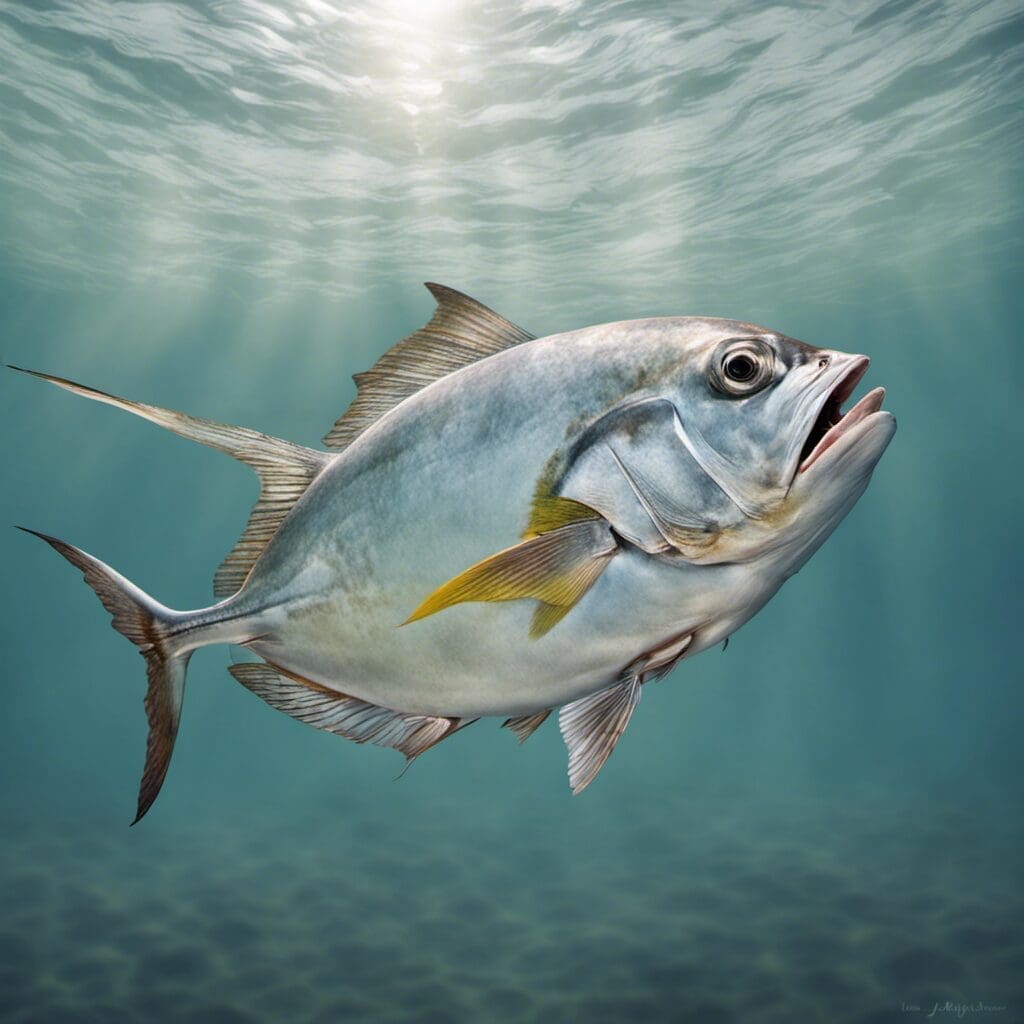Introduction
The Great Pompano (Trachinotus goodei), also known as the South Atlantic Pompano or Guanabara Pompano, is a coastal marine fish belonging to the Carangidae family.
Conservation Status
The Great Pompano is currently included in the “Least Concern” category by the IUCN Red List. With no specific conservation efforts underway, continued monitoring of the population sizes is critical to ensuring the species’ long-term survival.
Statistics
| Characteristic | Average | Range |
|---|---|---|
| Length | 15 inches | 10-25 inches |
| Weight | 4 pounds | 1-8 pounds |
| Lifespan | 7 years | N/A |
Distribution
The Great Pompano spans the western Atlantic Ocean, ranging from Brazil to Florida, and into the Gulf of Mexico. It’s a migratory species that moves towards warmer waters during colder months.
Habitats
The Great Pompano is primarily a saltwater species, though it can also be found in brackish waters. They typically stay within the depth range of 20 to 50 meters, preferring temperature ranges between 20 to 28°C.
When and Where to See
The Great Pompano is usually spotted year-round in warmer tropical waters. Seasonal patterns indicate a higher likelihood of sightings during spring and fall migrations.
Best Fishing Locations
- Florida coast, USA
- Bahia, Brazil
- Gulf of Mexico
- Caribbean coasts
General Tip: Look for warm, coastal waters and sandy bottoms, where they typically spawn and feed.
How to Catch
Preferred baits for the Great Pompano include shrimp and crabs. Popular fishing techniques include bottom fishing and surf fishing. The best time to fish is usually during dawn or dusk, particularly during the warmer months.
Identification Guide
Physical characteristics of the Great Pompano include a solid silver-gray body, a deeply, forked tail, and a fairly elongated shape. It has no particular markings and is often confused with other Pompano species due to its similar size and shape.
Culinary
The Great Pompano is highly valued in food markets due to its rich, sweet flavor and the versatility of its firm, flaky flesh. It’s often grilled, baked, or broiled and served with a variety of sides. Nutritional information includes high levels of proteins, vitamins, and omega-3 fatty acids.
Additional Information
The Great Pompano is known for being a highly energetic species, displaying fast and erratic movements. Its natural predators include dolphins, sharks, and larger species of fish. It’s also a popular target for commercial and recreational fishing, which can pose threats to its population.
References and Further Reading
For additional information, notable sources and recommended readings on the Great Pompano include ABC Publishing’s “Guide to Sea Fishes,” the Florida Marine Research Institute’s “Fishes of the Gulf of Mexico,” and the IUCN’s Red List

